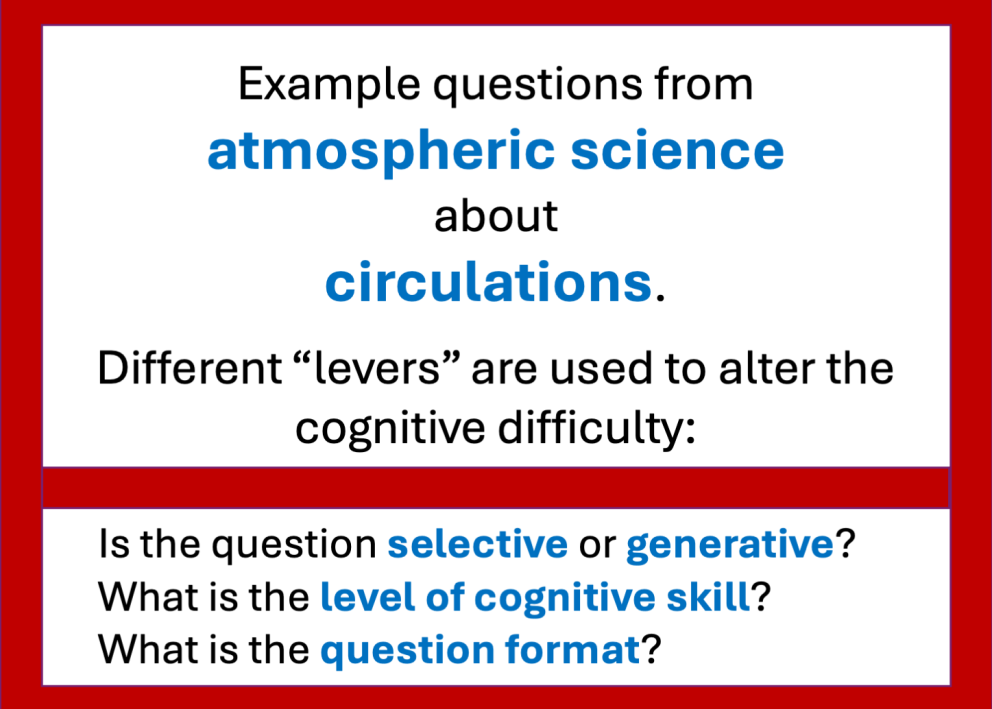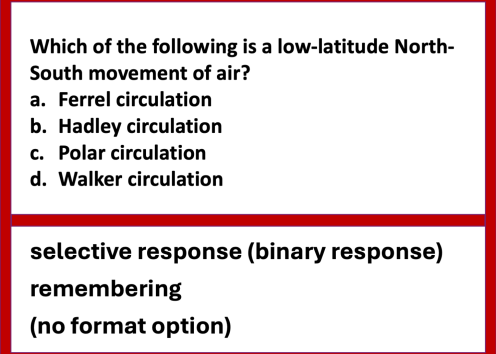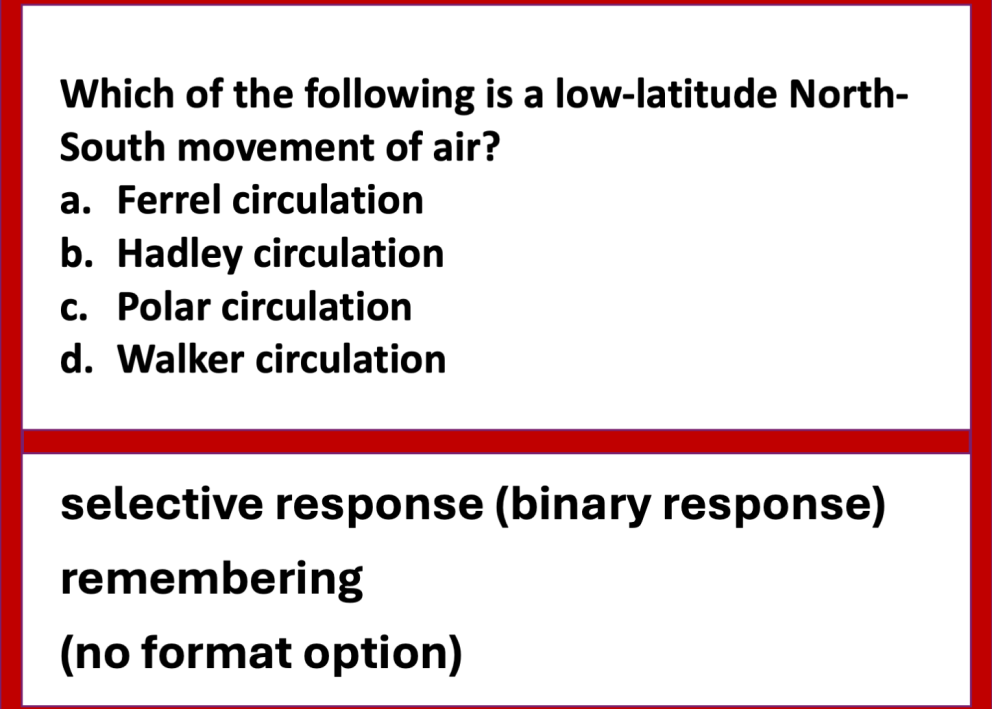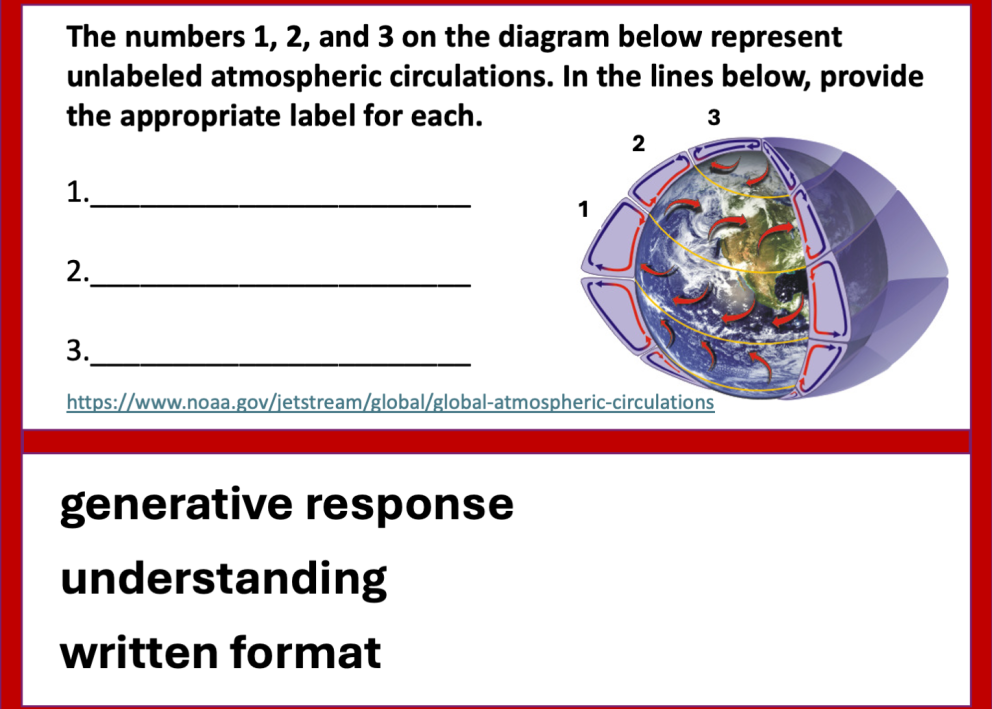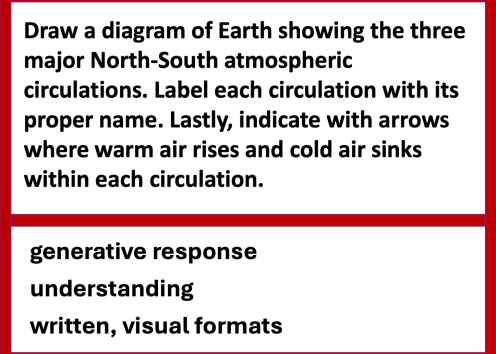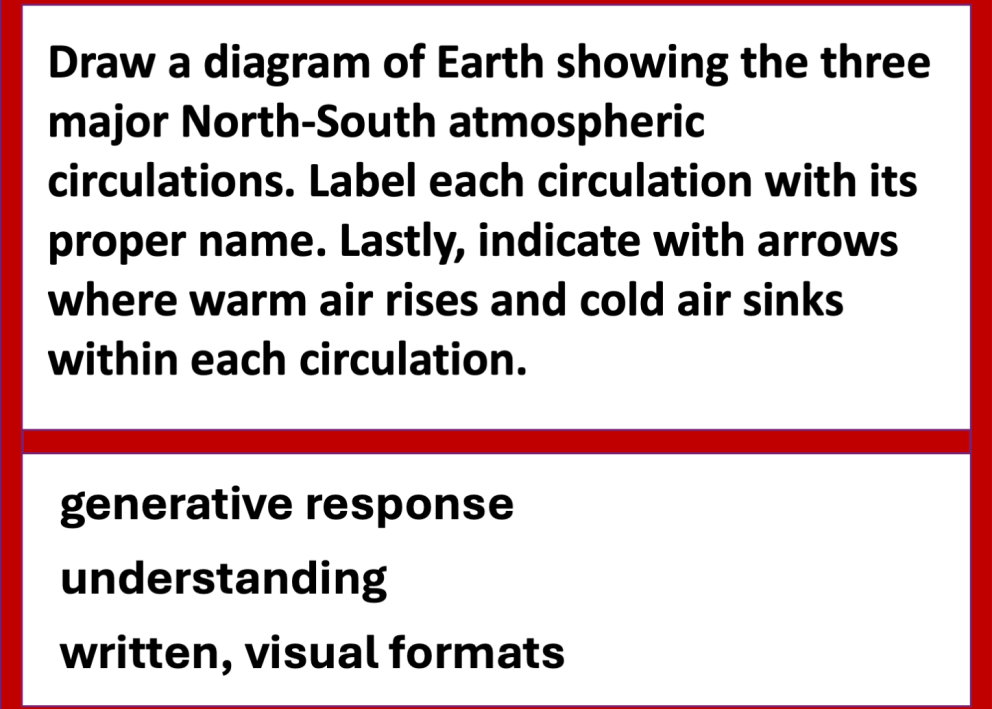Atmospheric Science Examples
Example exam questions from the field of atmospheric science about air circulations. Each example is of a different difficulty based on levers at the instructor’s disposal: generative vs. selective response; cognitive effort as reflected in Bloom's taxonomy; and response format, such as written, oral, visual, etc.

